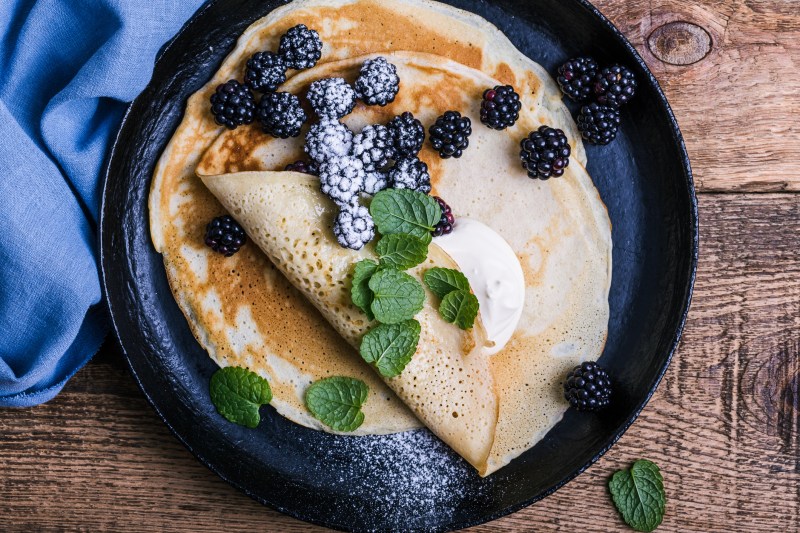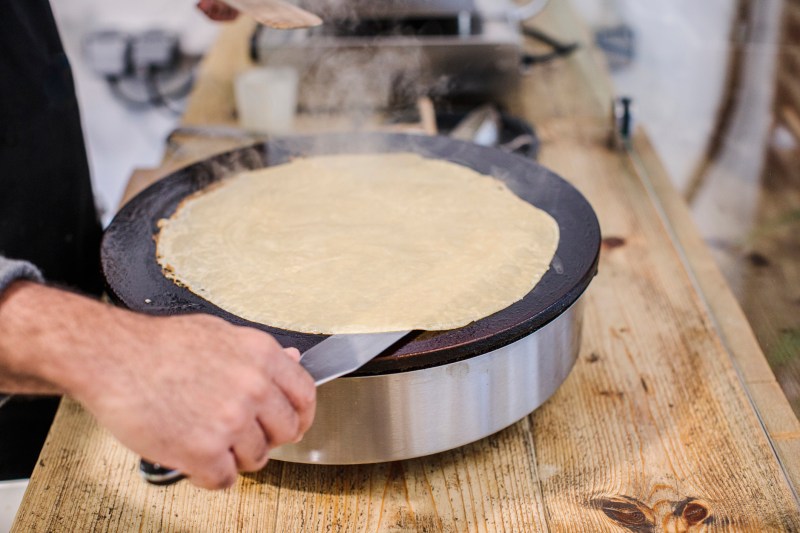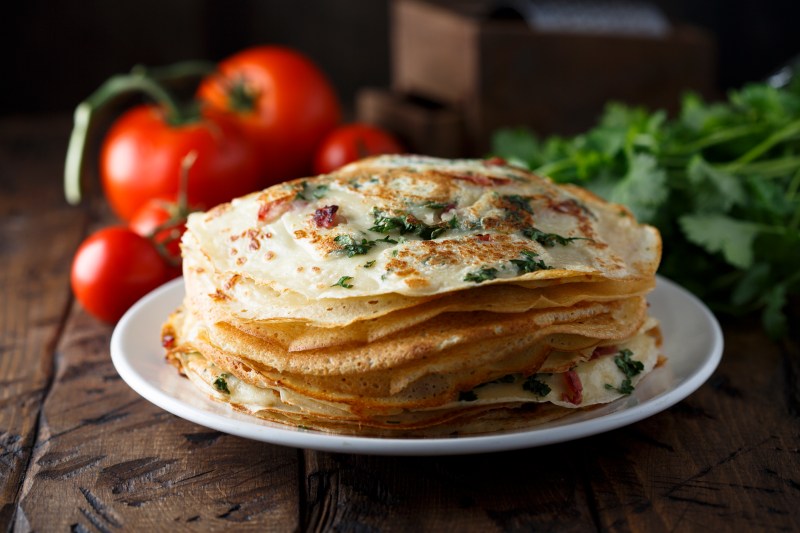The influence of French cuisine stretches far and wide. From sauces to wine, it’s impossible to overlook the impact it’s had on how we dine. While we can thank France for perfecting some of our most beloved morning meals, like the omelet or French toast, perhaps one of their sweetest contributions to breakfast is the crêpe.
A distant cousin of the pancake, crêpes are a thinner, lighter, golden brown disc dish with the topping added to the center and the edges of the crêpe folded over to tuck the fillings inside.
Crêpes can be served any time of the day, in a variety of ways both sweet and savory. Crêpes sucrées are usually a sweet breakfast, brunch or dessert filled with fruits, sugar, or spreads like Nutella. The more savory version, crêpes salées or galettes, are enjoyed for lunch or dinner and made for toppings like cheese, eggs, and ham.
The creation of the crêpe has been traced to the coastal town of Brittany in Northern France, where it quickly became one of the country’s most popular foods. Today, crêperies line the streets and fill the menus all over France, and are even celebrated as part of the traditional holiday La Chandeleur or “Le Jour des Crêpes.”
The popularity of crêpes has spread all over the world and has been adopted by many cultures and cuisines. In South India, the dosa is a large savory crêpe made from lentil and rice and even America has a sweet sourdough crêpe known as the 49er flapjack.
Crêpes Basics

The base of every crêpe begins with a combination of simple ingredients like flour, butter, milk, water, eggs, salt, and sugar, but depending on whether the result is sweet or savory some of the ingredients will change.
Sweet crêpes are generally made with a farine de blé or wheat flour while the traditional Brittany savory style is always made with buckwheat flour.
When it comes to what to put inside a crêpe, the toppings can be as wide-ranging as you choose but some ideas to start with include:
Sweet Fillings:
- Butter
- Powdered Sugar
- Fresh Fruit
- Nuts or Seeds
- Honey or Syrup
- Nutella or Nut butter
- Caramel or Chocolate sauce
- Whipped cream or Ice Cream
Savory Toppings:
How to Make Traditional French Crêpes

Ingredients:
For Sweet:
- 3 large eggs
- 2 1/3 cups milk
- 1/4 cup sugar
- 1 teaspoon vanilla
- 1 pinch of salt
- 2 1/3 cups flour
- Butter for the pan
For Savory:
- 2 eggs
- 1 ½ cups milk
- 2 tablespoons butter
- ¼ cup buckwheat flour
- ¾ cup all-purpose flour
- 1 pinch of salt
- Butter for the pan
Tip:
Since crêpes are larger than pancakes, it’s best to use a larger 8- to 9-inch non-stick pan or a crêpe pan to make sure there is enough space.

Method:
- In a blender, pulse the eggs, milk, sugar, vanilla, salt, and flour (use ingredients based on sweet/savory) for 7 to 10 seconds, or until the batter is smooth. Pour into a bowl. (The batter can be refrigerated, covered, for up to 3 days. If the batter thickens too much, add additional milk before cooking to thin it to the consistency of heavy cream.)
- Heat an 8- or 10-inch non-stick skillet or well-seasoned crêpe pan over medium heat until hot. Using one end of a stick of butter, coat the bottom of the pan with a thin layer of melted butter.
- Pour 1/3 cup of batter into the center of the pan. Immediately pick up the pan and tilt and swirl it to spread the batter evenly over the bottom.
- Cook for 1 to 2 minutes, or until the crêpe is golden on the bottom.
- Use a rubber spatula to loosen the edge of the crêpe all around. Hold the edge with your fingertips and gently, but quickly, flip the crêpe to the other side (or use a spatula if that feels more comfortable).
- Cook for another 30 seconds, or until the crêpe is golden on the bottom: Slide the finished crêpe onto a plate.
- Repeat until all the batter is used, stacking the crêpes on top of each other on the plate.
- Place one crêpe on a plate and fill it with your filling of choice. Either roll the crêpe or fold it into quarters and top with additional toppings if desired. Serve warm.

How to Store Crêpes
Cover and refrigerate cooked crêpes for up to a week. They can be easily reheated in the oven or a hot pan then filled and served as if fresh.



